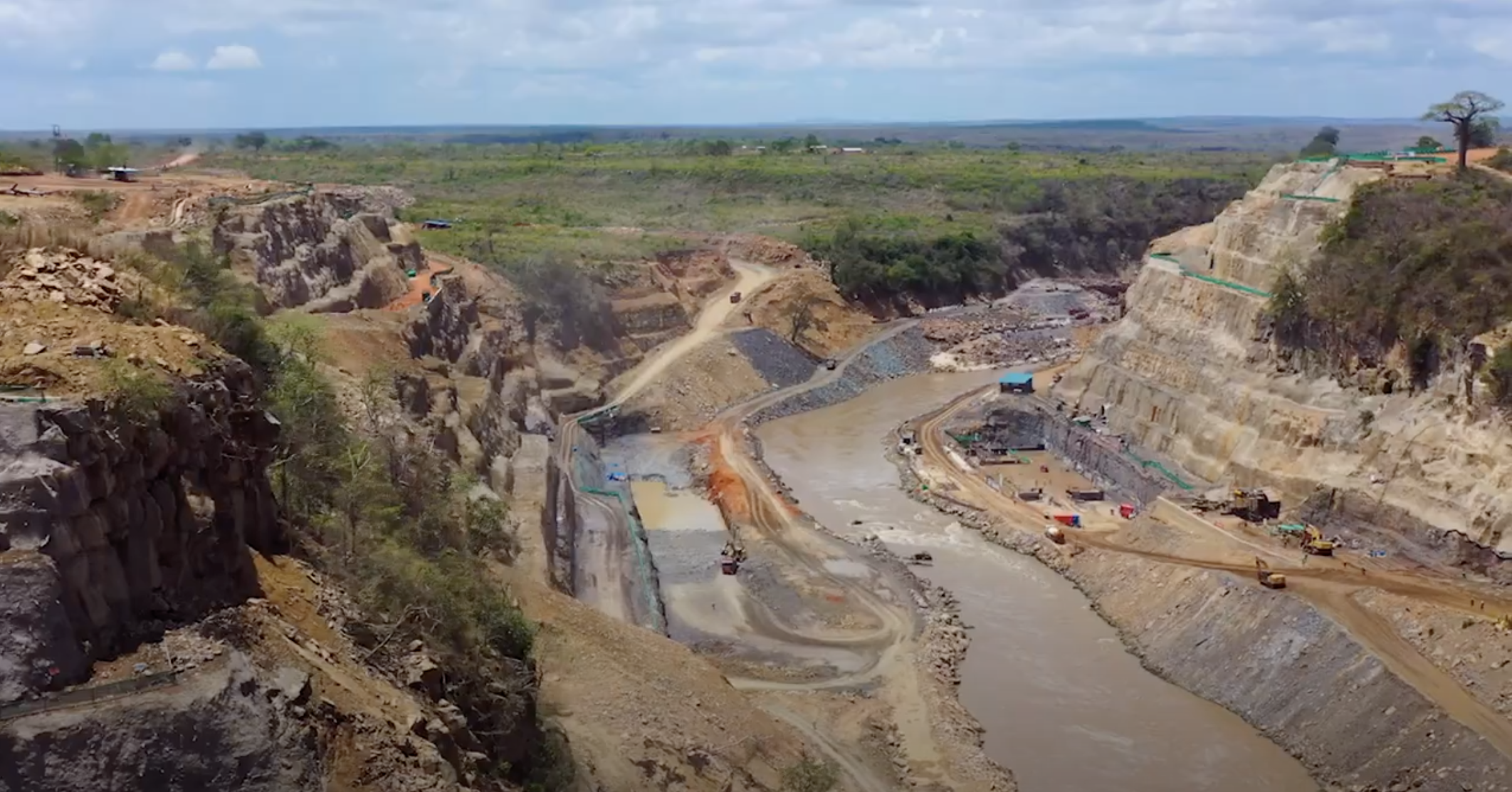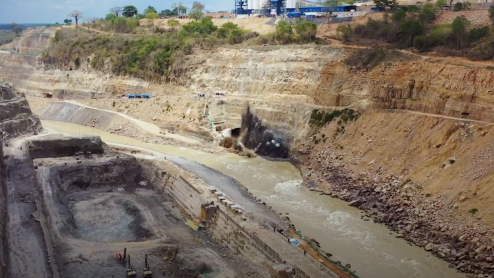Africa’s natural World Heritage sites are protected for future generations but remain under threat
Today (18 April) is World Heritage Day, a chance to celebrate and promote awareness of global cultural and natural heritage and to encourage the preservation and protection of monuments and sites.
On this day, we call on signatories to the World Heritage Convention to uphold their commitments to protect and conserve our global heritage – and, especially, to halt damaging infrastructure projects threatening some of Africa’s most iconic World Heritage Sites, many of which are home to significant populations of endangered species, such as elephants and rhinos.
We also call on the corporate and financial sectors to adopt UNESCO’s ‘No Go Commitment’ to treat World Heritage Sites as off-limits for harmful industrial activities and large scale infrastructure developments and to reflect this commitment in their corporate sustainability standards and lender criteria.
The 1972 UNESCO World Heritage Convention aims to identify and protect natural and cultural heritage around the world, sites which are considered to be of Outstanding Universal Value (OUV) – that is, of cultural and/or natural significance so exceptional as to transcend national boundaries and to be of common importance for present and future generations of all humanity.

Elephants in the Selous Game Reserve, Tanzania (c) EIA
This is a significant global and aspirational vision, that some places are so important that their protection is not only the responsibility of a single nation but is also the duty of the international community as a whole, not only for this generation, but for all those to come.
This is the obligation and commitment that countries signed up to the Convention (known as State Parties) are meant to uphold when they identify and nominate sites for inscription on the World Heritage List. In particular, Parties have the responsibility to “not take any deliberate measures that directly or indirectly damage their heritage or that of another State Party to the Convention”.
Despite this, numerous Natural World Heritage Sites are under increasing pressure from planned infrastructure developments, such as roads and dams, and extractive industries, including mining, oil and gas projects.
As EIA has reported over the years, the Rufiji hydropower plant at Stiegler’s Gorge, in Tanzania’s Selous Game Reserve World Heritage Site, poses a massive threat to one of Africa’s most iconic protected areas. Owing to a spate of relentless elephant poaching which triggered the loss of more than 60 per cent of the Site’s elephant population, the Selous Game Reserve was first placed on the list of World Heritage in Danger in 2014.
EIA has campaigned over the past four years for the construction of the dam to be halted, for the World Heritage Committee to delist it as a World Heritage Site and for investors in the project to divest, given the serious environmental harm caused.
The World Heritage Committee has repeatedly called on the Government of Tanzania to halt construction, to invite an expert mission to verify the extent of the damage already incurred and to assess the state of conservation of the property. To date, no invitation has been forthcoming.
At the 44th meeting of the UNESCO World Heritage Committee in 2021, the Selous Game Reserve World Heritage Site was proposed for delisting. In support of the proposal, we outlined our concerns and recommendations in a hard-hitting report World Heritage Dammed and were one of the only NGOs to make an intervention on this issue at the meeting.
However, the Committee once again failed to abide by its own Convention and chose not to hold Tanzania accountable for its destruction of a World Heritage Site, which was not delisted. Several State Parties defended Tanzania’s sovereign right to develop its economy and increase its energy security on behalf of its population.
This argument completely disregards the core objectives of the World Heritage Convention and, indeed, sustainable development principles.
As we have previously pointed out, the failure to delist the Selous and the repeated failures to uphold the values and objectives of the World Heritage Convention essentially gave the Government of Tanzania a green light to continue its destructive construction, setting a terrible precedent and highlighting to the international community that countries are only willing to pay lip service to the World Heritage Convention when what is needed is remedial action and compliance measures to ensure the protection of our shared humanity.

Construction work at the dam site in the Selous
The dam’s main body was completed in October 2022 and in December 2022 the filling of the dam, known as impoundment, commenced. The impoundment is a crucial step before the hydroelectric plant is commissioned.
The impoundment was attended by Tanzania’s President, Samia Suluhu Hassan, who has long defended the project started by her predecessor, the late John Magufuli. A celebration of the impoundment was attended by numerous Tanzanian Government officials and a delegation from the Egyptian Government.
By supporting the Rufiji hydropower plant, including through diplomatic visits, Egypt has clearly been complicit in the direct damage of another State Party’s heritage – a direct infringement of its obligations under the World Heritage Convention.
The role of the financial sector in providing funding for the hydropower plant also cannot be ignored.
EIA continues to encourage the investors in the project to divest, given the significant environmental harm, and is actively promoting the adoption of No Go commitments in their lending policies and sustainability standards. In a demonstration of best practice in responsible finance, Norges Bank, Trustus Capital Management and Tundra Fonder recently divested their shareholdings in Elsewedy Electrics on the grounds that the construction company was contributing to, or was itself responsible for, serious environmental damage in the context of the Rufiji hydropower project.
But the Selous Game Reserve is not the only African Natural World Heritage Site currently at risk.
Along with numerous international and local civil society groups, EIA has drawn attention to the plans by ReconAfrica, a Canadian oil and gas company, to prospect for both oil and natural gas in north-western Botswana and north-eastern Namibia in an area known as the Kavango Basin. Within this area is the Okavango Delta World Heritage Site, a haven for wildlife, especially endangered species such as elephants and rhinos.

The ReconAfrica drill site
The plans to prospect for oil and natural gas in such a sensitive area, let alone a World Heritage Site, is especially troubling when considering the extensive global efforts to combat climate change through a transition away from fossil fuels in favour of renewables.
ReconAfrica currently holds exploration licences for both Namibia and Botswana, but the project and supposed benefits to local communities have drawn much criticism, including reports of failures to adequately consult with local communities, allegations of illegally building roads, clearing forests and drilling wells, violating its own Environmental Management Plan and being investigated for securities fraud by Canadian and German authorities.
Communities claim the illegal roads traverse well known elephant corridors, resulting in elephants entering villages and destroying crops, increasing the likelihood of occurrences of human-elephant conflict, which is already a significant issue in Botswana and can have devasting impacts for both people and elephants.
The threat to African World Heritage Sites has been compounded by the delay of the 45th Session of the World Heritage Committee meeting in 2022 due to the invasion of Ukraine by Russia, which was meant to host the meeting.
The delay of this meeting has meant that urgent conservation issues have not been addressed, leaving many Sites vulnerable to the impacts of infrastructure developments and other threats.
With the 45th Session rescheduled to take place in Saudi Arabia in September this year, we will again call on Parties to fulfil their obligations and protect the world’s natural heritage for future generations. We will continue and expand our efforts to promote the adoption of UNESCO’s No Go Commitment by the private sector, including calling for strengthened global standards for corporate sustainability.
The ongoing global biodiversity crisis will require long-term and sustained efforts by all of us to overcome. It is therefore imperative that Natural World Heritage Sites, being of global significance, are protected and conserved to the highest standard, not just for our sakes, but for future generations.




